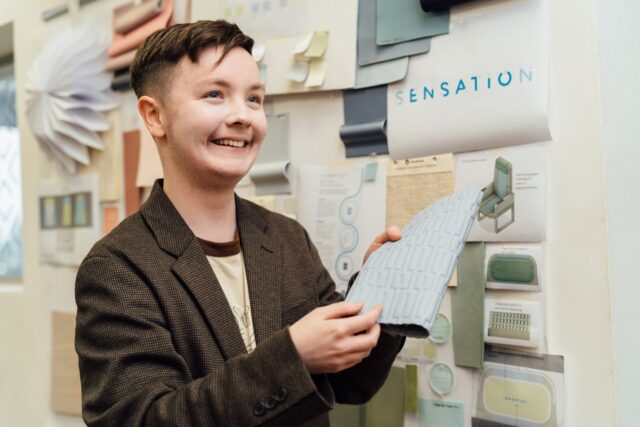How to ride the tech innovation curve in aerospace and defence

By Tom Rowe-Jones, director at LAVA Advisory Partners
From electronic warfare to autonomous drones, technological innovation in defence is already accelerating at breakneck speed. With the government’s recent defence spending review pledging to ‘innovate and accelerate innovation at a wartime pace’, this will only increase.
Traditional development models, while robust and still incredibly valuable, simply can’t keep up with the pace of change of the modern conflict arena.
For large, legacy Aerospace & Defence companies, this means M&A is becoming a critical, strategic lever to buy in complementary capabilities and keep pace with a battlefield that now evolves in days and weeks, not months and years.
It’s also providing an expanding source of funding to small companies that have historically seen the MoD as one of their only developmental funding sources.
A new kind of arms race
Where most equipment lifespans used to be measured in decades, today’s threats can shift far faster. Ukraine’s recent experience demonstrated how rapidly spirally developed technologies such as low-cost drones can be adapted and deployed to address specific challenges.
Each new deployment prompts an equally fast countermeasure, mitigating against it sooner than ever before. It’s an iterative arms race, and companies still locked into pure long-cycle development risk falling behind.
Linear models like waterfall, which prioritise completeness and documentation before iteration, are valuable for long-life products like fighter jets, but are not fit for purpose in the rapid-iteration world.
They’re too slow, too rigid, and can create significant risk by deferring real-world testing until late in the process. The government’s review emphasised the need to expand newer, cheaper, more attritable solutions, while also maintaining delivery, and improving performance, of the bigger, more survivable platforms.
So, forward-thinking owners are turning to M&A to buy complementary, spirally developed technologies that can accelerate growth and future-proof their survivable offerings.
Why spiral succeeds
Spiral development enables continuous planning, testing, and evolution so issues and improvements can be identified and acted upon at multiple stages of the process. It’s ideal where solutions must be fielded rapidly, adapted seamlessly, and constantly improved in response to emerging threats.
Companies embracing this model can deploy earlier, adapt faster, and ultimately deliver more effective solutions, more often.
This approach has also underpinned a new wave of dual-use and COTS (commercial off-the-shelf) technologies making their way into military applications.
Rapid prototyping, modular designs, and feedback-driven iteration are unlocking faster capability cycles and broadening access to innovation.
M&A as a shortcut to capability
For large defence firms, evolving internal R&D pipelines to this pace of change is a tall order, so many instead acquire the technologies, IP, capabilities, or product portfolios they need.
Buying a company that already works at this tempo, with a culture of rapid iteration and proven results, is far faster than trying to retrofit that mindset into an existing business.
Smart acquirers aren’t just buying tools or patents, but the processes that built them. Whether it’s AI-driven Intelligence, Surveillance and Reconnaissance (ISR) solutions, loitering munitions with adaptive targeting algorithms, or battlefield-ready edge processing, the common thread is a more responsive, innovation-first development ethos, and it’s making these companies a compelling proposition to acquirers.
It also provides options to smaller firms. That many institutional investors are unable to fund defence-related initiatives has meant that the MOD was the only funding option for many.
But slow approval processes, limited capital injections, and lengthy buying cycles have made it incredibly challenging for small firms to really deliver on their potential via this route.
However, with the advent of family offices and dedicated investment platforms targeted at defence, this is changing. Small companies are seeing opportunities to sell to, or gain investment from, more sources than ever before, and the MOD is going to feel the pressure to double down and keep up with the pace of change.
Drawing investment
For business owners, this shift in buying strategy means opportunity. Positioning a company for investment or acquisition doesn’t just mean polishing financials; it means demonstrating how the tech works, how it scales, and how the product lifecycle supports modern deployment realities.
Buyers want to see both the result and the process. Clear documentation of development methodologies, supply chain flexibility, and iteration cycles can increase investor confidence. Similarly, it’s helpful to be able to prove agility.
Case studies where products evolved quickly in response to end-user feedback or theatre conditions prove the tech is fit for the modern landscape. From the acquirer’s side, the M&A process starts with defining the gaps they need to fill.
What capabilities can’t be delivered today that are becoming essential? Whether that’s a way of working, or a specific technology like autonomy, swarming coordination, or cyber resilience, it’s vital to know what’s needed, and why.
Acquiring new capabilities only works if the buyer values and retains what makes them successful, and incorporates that into post-deal planning. Culture clash, incompatible technologies, and overbearing governance can quickly snuff out the innovation, so a clear plan to protect and promote the value of the purchase is key.
The road ahead
Aerospace and defence is no stranger to transformation, but the current pace of change is unprecedented. The companies that will lead through the next decade will be the ones who successfully acquire, integrate and scale the technologies already shaping the battlespace of tomorrow.
But to truly maximise this opportunity, procurement also needs to make life easier for the innovators.
Only through a thorough review of purchasing processes and approvals can the government modernise enough to promote and protect the transformation of the UK defence and aerospace sector.
















